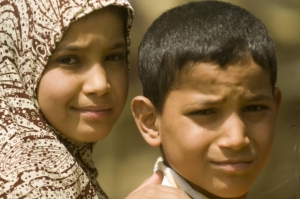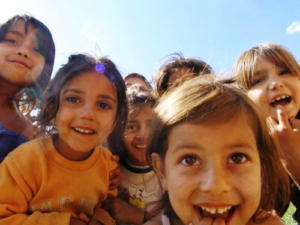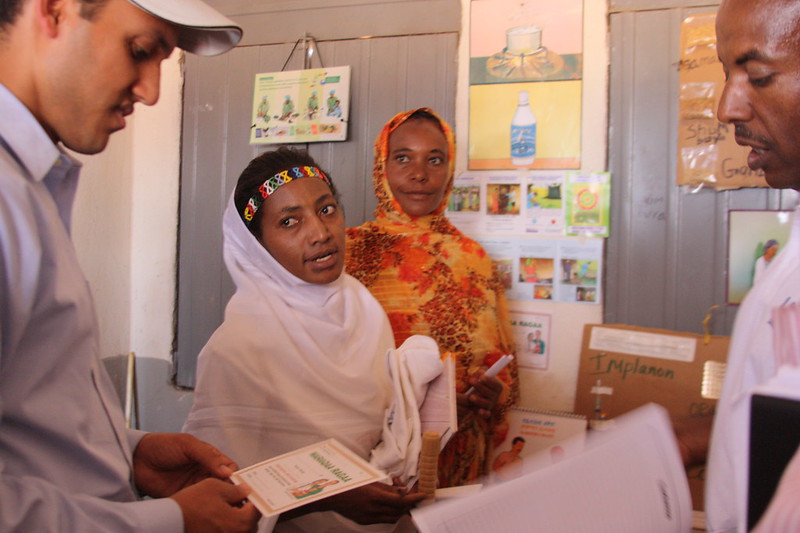 Located on the west coast, Mali is one of the largest countries on the continent of Africa. Mali faces extreme poverty, with numbers continuously rising since the COVID-19 pandemic. There are a variety of diseases in Mali that affect much of the population and can often be fatal. Trachoma is a disease caused by a bacterial infection that affects the eyes and can eventually lead to blindness. When blindness occurs from trachoma, it is irreversible. According to data from 2022, 125 million people live in places with a trachoma endemic and are at severe risk of being exposed to the disease. Trachoma in Mali was a problem for a number of years. Women are twice as likely to suffer from blindness due to trachoma than men.
Located on the west coast, Mali is one of the largest countries on the continent of Africa. Mali faces extreme poverty, with numbers continuously rising since the COVID-19 pandemic. There are a variety of diseases in Mali that affect much of the population and can often be fatal. Trachoma is a disease caused by a bacterial infection that affects the eyes and can eventually lead to blindness. When blindness occurs from trachoma, it is irreversible. According to data from 2022, 125 million people live in places with a trachoma endemic and are at severe risk of being exposed to the disease. Trachoma in Mali was a problem for a number of years. Women are twice as likely to suffer from blindness due to trachoma than men.
The disease spreads more in areas with poor sanitation and overpopulation. It is most commonly found in the larger areas of Africa, previously affecting Mali significantly. It is spread from person to person, originating from an infection in the eye. Trachoma in Mali has not been a quickly fixed battle. Data from the 1980s shows the former prevalence of the disease in the country and the dire need for a solution.
The SAFE Strategy
Adopted by the WHO in 1993, the SAFE strategy helped supply countries with the resources needed to prevent the spread of trachoma.
SAFE stands for surgery, antibiotics, facial cleanliness and environmental improvements. The strategy aimed to increase the number of surgical operations performed on those infected with trachoma as well as provide antibiotics to entire communities for the benefit of public health. Because of how easily trachoma can be spread, it was essential to promote facial cleanliness and understand that the infection rate is linked to overcrowded living conditions and unsanitary water. The SAFE strategy has been used in many different countries that suffer from a trachoma endemic, and Mali, among other countries, has finally overcome the public health problem.
Trachoma in Mali
Political violence in Mali made it very difficult for the country to overcome this endemic problem. When the WHO created the SAFE strategy, the program slowly gained trust and developed a partnership with the Malian government. Diseases like trachoma affect the poorest communities and only lead countries to greater poverty rates.
Trachoma is the first of the WHO’s neglected tropical diseases that Mali has eliminated, and Mali is the sixth country out of 29 in Africa that has successfully eliminated the disease.
The WHO has several partners including The Carter Center and Sightsavers which all worked together to assist Mali in combating the disease. Through donations and medical training, trachoma is no longer a public health concern in Mali. It is important to note that several different organizations working alongside the WHO and the Malian government worked together to make this happen and improve the health and poverty rates of the people of Mali.
The World Health Organization recognized Mali for overcoming the trachoma endemic. Today, less than 5% of children suffer from inadequate access to antibiotics to treat trachoma, and the presence of trachoma in adults is nearly zero. On April 27, 2023, the World Health Organization announced that trachoma in Mali was no longer considered a public health problem.
– Alesandra Cowardin
Photo: Flickr
 Recently, the World Health Organization (WHO) declared that Iraq has successfully tackled trachoma as a public health issue. With this achievement, the country becomes the 17th to officially eradicate the disease. Here is what you need to know about how Iraq eliminated trachoma.
Recently, the World Health Organization (WHO) declared that Iraq has successfully tackled trachoma as a public health issue. With this achievement, the country becomes the 17th to officially eradicate the disease. Here is what you need to know about how Iraq eliminated trachoma.  Singapore typically faces a spike in dengue cases between May and October, as a result of the warm conditions that perpetuate the breeding of Aedes mosquitoes. Cases of the virus have risen in recent years, necessitating a response from the country’s government and efforts to mitigate its mosquito population. Several efforts are underway to help curb the spread of dengue in Singapore.
Singapore typically faces a spike in dengue cases between May and October, as a result of the warm conditions that perpetuate the breeding of Aedes mosquitoes. Cases of the virus have risen in recent years, necessitating a response from the country’s government and efforts to mitigate its mosquito population. Several efforts are underway to help curb the spread of dengue in Singapore.
 Kosovo, the
Kosovo, the 
 Epilepsy is one of the most widespread neurological disorders in the world,
Epilepsy is one of the most widespread neurological disorders in the world,  In 2023, India became
In 2023, India became  According to the World Bank, in South Africa, based on the upper-middle-income country poverty line, the poverty rate stood at about
According to the World Bank, in South Africa, based on the upper-middle-income country poverty line, the poverty rate stood at about  According to the IFRC, “
According to the IFRC, “